

| Haeflin Fighting Knife - Haeflin Fighting Knife is a knife designed specifically suited for the smaller hands of its Haeflin users. All other will have a penalty of +1 DF to its use. Return to Top |
||||||||||||||||||||||||||||||||||||||||||
| Haeflin Frog - A Haeflin Frog is a type of water vessel that can travel underwater for up to 15 hours or as long as the air lasts in the vessel. The ship design came out of the need for the Haeflins to enter and exit Horde controlled waters during the Fourth War with the Horde. The first prototype was launched, and began sea trials in TK 1055. The ship has the ability to transport over 4 tons of cargo. Return to Top |
||||||||||||||||||||||||||||||||||||||||||
| Hak Luftetar - The Hak Luftetar is the vengeance dance of the Sword Dancers of Terla. Return to Top |
||||||||||||||||||||||||||||||||||||||||||
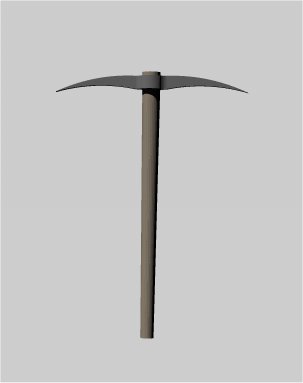 Hakke - Hakke is dwarven for Pickaxe. The Pickaxe is the first tool a dwarven child is taught to use in service to the earth. Hakke - Hakke is dwarven for Pickaxe. The Pickaxe is the first tool a dwarven child is taught to use in service to the earth.Return to Top |
||||||||||||||||||||||||||||||||||||||||||
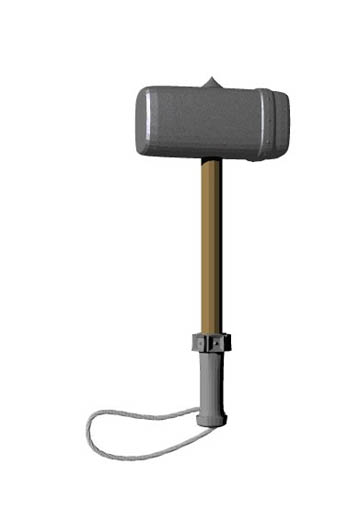 Hammeren - Hammeren is dwarven for Hammer. The Hammer is the second tool a dwarven child is taught to use in service to the earth and defense of the dwarven people. Hammeren - Hammeren is dwarven for Hammer. The Hammer is the second tool a dwarven child is taught to use in service to the earth and defense of the dwarven people.Return to Top |
||||||||||||||||||||||||||||||||||||||||||
 Han-Yi - Village of Han-Yi is one of the villages in the county of Reach in the province of Azin in the country of Azin. Han-Yi - Village of Han-Yi is one of the villages in the county of Reach in the province of Azin in the country of Azin.Return to Top |
||||||||||||||||||||||||||||||||||||||||||
| Hand - Hand is a Horde military unit that consists of two Vise, one Claw of Sappers, two healers, two mages, one priests or shamans (acting as political officers as well as religious councils) 1 claw of scouts (mounted or un-mounted) and a Hand commander with a claw of staff.
A Hand usually numbers 340 Horde warriors. Please note that the Hand is the core unit size of the Horde. A Hand of warriors would include a supply train of 100 3-ton wagons with 75 to 100 mounted warriors for a total of 475 to 500 mounts and 275 to 300 warriors. Return to Top |
||||||||||||||||||||||||||||||||||||||||||
| Hands of a Grand Force - Hands of a Grand Force is a Horde military unit that consists of two Grand Forces and a Finger of support staff and a Hand of a Grand Force Leader. The number of warriors in Hands of a Grand Force numbers around 22587 in strength. Return to Top |
||||||||||||||||||||||||||||||||||||||||||
 Harborview - Harborview is a city in the country of Valinnia. Harborview controls access to the center of the continent. Harborview - Harborview is a city in the country of Valinnia. Harborview controls access to the center of the continent.Return to Top |
||||||||||||||||||||||||||||||||||||||||||
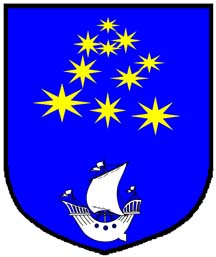 The University of the Arcane Arts at Harborview - The University of the Arcane Arts at Harborview was established in TK 1050. It was established after the city was rebuilt after the Fourth War with the Horde. The primary areas of magick studied at the Harborview University are defensive magicks. The University of the Arcane Arts at Harborview - The University of the Arcane Arts at Harborview was established in TK 1050. It was established after the city was rebuilt after the Fourth War with the Horde. The primary areas of magick studied at the Harborview University are defensive magicks.Return to Top |
||||||||||||||||||||||||||||||||||||||||||
 Harinten - Harinten is the capital city of the country of Katonnan. It is the first city to be rebuilt in Katonnan after the hostilities ended at the conclusion of the Fourth War with the Horde. Harinten - Harinten is the capital city of the country of Katonnan. It is the first city to be rebuilt in Katonnan after the hostilities ended at the conclusion of the Fourth War with the Horde.Return to Top |
||||||||||||||||||||||||||||||||||||||||||
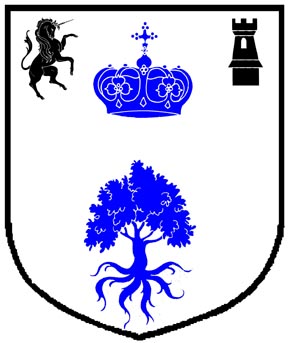 Harven City - Harven City is the Capital of the country of Bryagel. Harven City - Harven City is the Capital of the country of Bryagel.Return to Top |
||||||||||||||||||||||||||||||||||||||||||
| Hastilude - Hastilude is a term used to describe non-tournament martial games. Hastilude specifically excludes tournaments. Depending on the region will depend on the type of martial games that are included in the Hastilude. Return to Top |
||||||||||||||||||||||||||||||||||||||||||
| Makeda Hatshepsut - Makeda Hatshepsut was the first female ruler of the Gallison Estralla Empire. She was also the last ruler of the Gallison Estralla Empire as it began its fall from grace. She is credited for saving the memory of her people. She would not let their deeds and accomplishments fade or become lost to time. Her tomb was discovered on the 155th day of the year of TK 1048. Return to Top |
||||||||||||||||||||||||||||||||||||||||||
| Healer's Ash - Healer's Ash (Magical Element, Fire and Earth, rated MR 8) is a material that stops infections from forming on wounds and increases the healing factor of a character by four times their normal healing rate for four days or until the Ash is scraped off. Created by a mixture of Healer's Moss and pure water; that is then processed to create the Healer's Ash. The resulting powder looks like a clean white claylike ash. It is an item that is not too common and one can find it in stores (50%) at a cost of 130 P per dose. It should be noted that this is an alchemical creation and enchanting it down to MR 0 will nullify the healing effect. Return to Top |
||||||||||||||||||||||||||||||||||||||||||
| Healer's Moss - Healer's Moss (Magical Element, Fire Water and Earth, rated MR 3) was first discovered in Kenda. Applying Healer's Moss to a wound will increase the healing factor of a character by twice the normal healing rate of the character for 1 day or until it is taken off. There is only a small (5%) chance of finding healer's moss in the wild in the country of Kenda. The moss is blue-green in color and has the consistency of cat's fur. There is a very small chance (5%) of finding Healer's Moss in a store at a cost of 80 P per dose. It can be made into Healer's Ash and other products of healing. Return to Top |
||||||||||||||||||||||||||||||||||||||||||
| Healer's Soap - Healer's Soap (Magical Element, Water and Fire, rated MR 3) was first fabricated in the city of Luxor in the country of Terralen on the continent of Terla during the Fourth War with the Horde. If used on external wounds, it recovers 3 FP when applied to the wound and doubles the character's healing rate for one day. A character can only enjoy the benefit of the Healer's Soap once per day. If one magically enchants Healer's Soap it doubles the once per day benefit. Healer's Soap can only be used on external wounds. The Healer's Soap can usually be found (85%) in stores at a cost of 15 P per pound. Enchanted Healer's Soap is not as common (35%) in stores; however, when it is found in stores, the Enchanted Healer's Soap will cost 200 P per pound. Return to Top |
||||||||||||||||||||||||||||||||||||||||||
 Heart Stone - Heart Stone is a quartz crystal. These stones are all the same size and are found near the White Mountains. It is not understood how these stones were created or created the same size. Many of the pantheon faiths believe that the gods sent them to help the races of Alquennas. It is a custom for those who are to be wed to exchange heart stones or give a loved one a heart stone before they go on a journey. Heart Stone - Heart Stone is a quartz crystal. These stones are all the same size and are found near the White Mountains. It is not understood how these stones were created or created the same size. Many of the pantheon faiths believe that the gods sent them to help the races of Alquennas. It is a custom for those who are to be wed to exchange heart stones or give a loved one a heart stone before they go on a journey.Return to Top |
||||||||||||||||||||||||||||||||||||||||||
| Helena - Helena the name of a city in southwestern part of the province of Kent in the country of Azin. Return to Top |
||||||||||||||||||||||||||||||||||||||||||
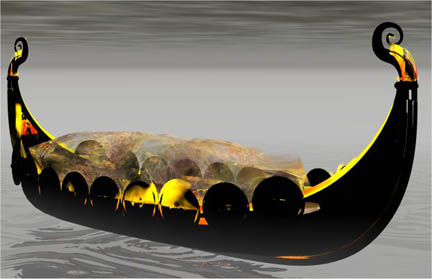 Hell Burners - Hell Burners are specialized fire ships that are designed to inflict mass damage. These floating bombs are effective against harbors and anchored fleets. Hell Burners - Hell Burners are specialized fire ships that are designed to inflict mass damage. These floating bombs are effective against harbors and anchored fleets.Return to Top |
||||||||||||||||||||||||||||||||||||||||||
 Hell Fire Lances - Artimus Goddard Davis of Kallon designed Hell Fire Lances. They are naphtha weapons encased in a brass and bronze tube that stands taller than a man does. It has an effective range of 1,200 feet. It takes one and one half hours to reload the Hell Fire Lance. The Hell Fire Lance will inflict 60 points of fire damage to its target. In order to operate a Hell Fire Lance the character must have the skill Siege Machine Operation. Hell Fire Lances - Artimus Goddard Davis of Kallon designed Hell Fire Lances. They are naphtha weapons encased in a brass and bronze tube that stands taller than a man does. It has an effective range of 1,200 feet. It takes one and one half hours to reload the Hell Fire Lance. The Hell Fire Lance will inflict 60 points of fire damage to its target. In order to operate a Hell Fire Lance the character must have the skill Siege Machine Operation.Return to Top |
||||||||||||||||||||||||||||||||||||||||||
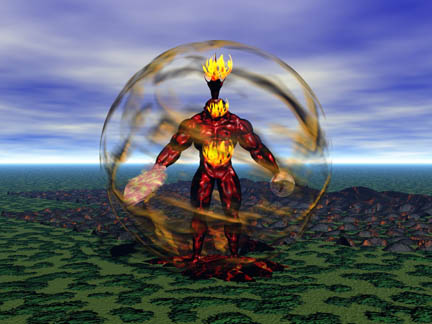 Helvete Vaktan - Helvete Vaktan is dwarven for Hell's Guard, a creature of fire and hate. There are several dwarven legends of this creature being sent by the dark to destroy the earth (land) of Alquennas. Helvete Vaktan - Helvete Vaktan is dwarven for Hell's Guard, a creature of fire and hate. There are several dwarven legends of this creature being sent by the dark to destroy the earth (land) of Alquennas.Return to Top |
||||||||||||||||||||||||||||||||||||||||||
Heraldic Charges - Heraldic Charges are the symbols used in depicting a set of arms. The Alquennas College of Arms uses most of the charges that are recognized by the Irish College of Arms of Earth established in 1921. A few additional charges are used by the Alquennas College of Arms. They are:
Return to Top |
||||||||||||||||||||||||||||||||||||||||||
Heraldic Tinctures - Heraldic Tinctures refer to the specific colors used in heraldry to describe or "blazon" a set of arms. These tinctures include metals, colors, and furs. The current Heraldic Tinctures for the Living World of Alquennas are:
Return to Top |
||||||||||||||||||||||||||||||||||||||||||
| Herber - An Herber is a garden comprised of herbs usually for culinary, medieval or craft purposes. Return to Top |
||||||||||||||||||||||||||||||||||||||||||
 Village of Herbs - Village of Herbs is one of the villages in the county of Spice in the province of Kallon in the country of Azin. Village of Herbs - Village of Herbs is one of the villages in the county of Spice in the province of Kallon in the country of Azin.Return to Top |
||||||||||||||||||||||||||||||||||||||||||
| Hex Master's Sage - Hex Master's Sage (Magical Element, Air rated MR 2) Hex Master's Sage is specialized cultivated augmented variety of Sage that only grows within the grounds of Duchy of Kent. It possesses a magical affinity for Air magicks. When one quantity is used in an anointing mixture for a device that will contain air magick, it counts as 3 materials and doubles the recharge rate of the device. If one enchants Hex Master's Sage (MR 0) and burns it as incense it will purify the air from effects of foul air and all levels of the spell "Create Noxious Fumes"; however it will only mitigate of dragons breath as long as it is burning. Hex Master's Sage can only be purchased dry, is expensive at 240 P per quantity, and is only available for a short time right after harvest to the open markets of the realms. Return to Top |
||||||||||||||||||||||||||||||||||||||||||
 Hibberon - Hibberon is one of the known planets in the Gallison Solar System. Hibberon - Hibberon is one of the known planets in the Gallison Solar System.Return to Top |
||||||||||||||||||||||||||||||||||||||||||
| High Forest - A High Forest is a term to describe a stand of trees usually from seedling beginnings. These are usually deliberately planted. Return to Top |
||||||||||||||||||||||||||||||||||||||||||
| Hill - A Hill is a terrain feature that measures from 10 feet to 500 feet in height above ground level and measures more than 30 feet wide at its base. Return to Top |
||||||||||||||||||||||||||||||||||||||||||
| Hill Huggers - Hill Huggers (magical Element, Earth rated at MR 4) Hill Huggers are a type of mushroom (lichen) that grows on the sides of hills and mountains in crevices. This fungus is roughly boot-shaped and is anchored to crevices by specialized anchor feet. The Hill Huggers begin life with a green-grey tint that warns one that at this stage of life the Hill Huggers are poisonous to ingest. The effects are similar to ingesting Aqua Hydrii. When the Hill Hugger turns a grayish-black tint, they are mature and are no longer dangerous to eat. Their NU value is 2 NU per pound. One can make an antidote for Aqua Hydrii with two pounds of mature Hill Huggers grown into a powder and added to water. A pharmacology roll is required to make the antidote. Hill Huggers can be found on the continents of Cellenda, Mednadda, and Xendarna where there is a 45% chance they can be found in the wild on the sides of hills or mountains and an 85% chance they will be found in a shop. On the continents where they are found they fetch a price of 40 P per pound and on other continents, they fetch a price of 120 P per pound. Return to Top |
||||||||||||||||||||||||||||||||||||||||||
 Hindra - Hindra is a continent located in the southern hemisphere just south of the equator. Not much is currently known about this continent. The one item that is known is that the races on this continent work together. This includes the remains of the Horde Jet Clan. Hindra - Hindra is a continent located in the southern hemisphere just south of the equator. Not much is currently known about this continent. The one item that is known is that the races on this continent work together. This includes the remains of the Horde Jet Clan.Return to Top |
||||||||||||||||||||||||||||||||||||||||||
| Hindra Ink - Hindra Ink (Magical Element, Water and Fire, rated MR 5) is a dark black ink that is made from soot from lanterns. This ink is used in technical and other writings and drawings that require the ink to be long lasting and that allows crisp writing lines. First exported out of Hindra in TK 1030, it has found homes in many magical texts to engineering texts as well as alchemical texts. One can purchase an 8 oz pot of Hindra ink. It costs 3 P at most shops. Return to Top |
||||||||||||||||||||||||||||||||||||||||||
| Hoben - A Hoben is the type of circular tent used by Horde soldiers in their encampments. There are other types used by members of the Horde who follow various flocks and herds. Return to Top |
||||||||||||||||||||||||||||||||||||||||||
| Holi - Holi is the Hindra Festival of Color that begins on the 90th day of the year and ends on the 100th day of the year. Those that celebrate this holiday participate in adding color to their fellow inhabitants of Hindra by throwing usually dry dye at each other. This is not a day to wear your finest clothes as, by the end of the day, one's clothes have many different colors layered upon them. Return to Top |
||||||||||||||||||||||||||||||||||||||||||
 Hollow's Glen - City of Hollow's Glen is one of the cities in the county of Clayton in the province of Kallon in the country of Azin. Hollow's Glen - City of Hollow's Glen is one of the cities in the county of Clayton in the province of Kallon in the country of Azin.Return to Top |
||||||||||||||||||||||||||||||||||||||||||
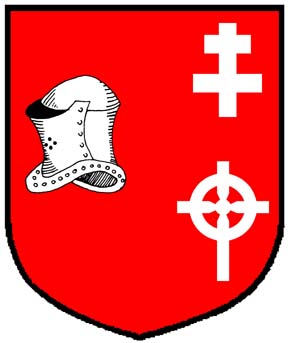 Holy Fortress of Kallon - During the decade of 1020 TK to 1030 TK, the old Holy Fortress of Kallon was due to be closed. It was thought by most that the Fortress was no longer needed in the heart of Azin. After all Kallon, the western provincial Capital of Azin was less than two days rides from the Holy Fortress. The return of Dark Forces in the area changes all that. The fortress itself fell under attack from the darkness. The fortress prevailed. The Holy Fortress of Kallon is located in the southern area of the province of Kallon in the country of Azin. Holy Fortress of Kallon - During the decade of 1020 TK to 1030 TK, the old Holy Fortress of Kallon was due to be closed. It was thought by most that the Fortress was no longer needed in the heart of Azin. After all Kallon, the western provincial Capital of Azin was less than two days rides from the Holy Fortress. The return of Dark Forces in the area changes all that. The fortress itself fell under attack from the darkness. The fortress prevailed. The Holy Fortress of Kallon is located in the southern area of the province of Kallon in the country of Azin.
Historical Note: Then healer Ellime' ath Silver Oak and then Dwarven Knight Tobar were instrumental in saving the Holy Fortress from Dark Forces in the year TK 1029. Return to Top |
||||||||||||||||||||||||||||||||||||||||||
| Hopa - Hopa is dwarven for Oops. Return to Top |
||||||||||||||||||||||||||||||||||||||||||
 City of Hope - The City of Hope was built during the Fourth War with the Horde in Azatar by the Alliance of Nations. It is ruled by the country of Azin and is a throne in the side of Azatar. City of Hope - The City of Hope was built during the Fourth War with the Horde in Azatar by the Alliance of Nations. It is ruled by the country of Azin and is a throne in the side of Azatar.Return to Top |
||||||||||||||||||||||||||||||||||||||||||
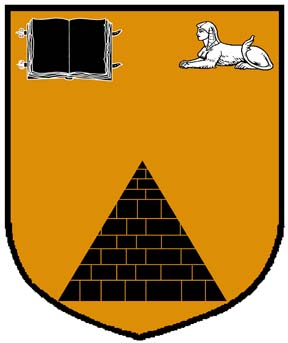 Library of Hope - Library of Hope located in the City of Hope in the country of Terralen on the continent of Terla was established in TK 1049. Library of Hope - Library of Hope located in the City of Hope in the country of Terralen on the continent of Terla was established in TK 1049.Return to Top |
||||||||||||||||||||||||||||||||||||||||||
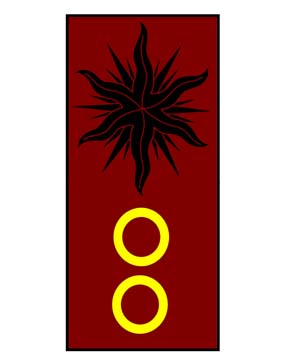 Horde Immortals - The Horde Immortals are the winners of a special competition that is held every Five years. This competition is held to find the best warriors of all the clans. The warriors that are in the top finishers of the competition and still live have the right to join the Horde Immortals. The Horde Immortals are blessed by the Exalted Woman and are said to be immortal. There are 10 hands of land troops, two hunting packs of sea troops and four hammers of siege troop Immortals. Horde Immortals - The Horde Immortals are the winners of a special competition that is held every Five years. This competition is held to find the best warriors of all the clans. The warriors that are in the top finishers of the competition and still live have the right to join the Horde Immortals. The Horde Immortals are blessed by the Exalted Woman and are said to be immortal. There are 10 hands of land troops, two hunting packs of sea troops and four hammers of siege troop Immortals.Return to Top |
||||||||||||||||||||||||||||||||||||||||||
| Horde Labor Camps - The Horde maintains hundreds of forced Labor camps throughout the world. The Camps are controlled directly by the military of the horde. The Religious factions within the Horde have been attempting to gain control of the camps for years but to no avail. The Labor Camps are filled with special prisoners or subjects who cannot pay their taxes. It should be noted that the inmates of the labor camps are not slaves. The inmates have lost the rights to be a slave, or Calton or subject to the Horde. The Horde deems them as soulless ones and as soulless ones do not deserve the rights of even a slave. Many of the prisoners have and will be used in weapon testing or sacrificed in a festival or ceremony. The Horde usually assigns an Orc or Goblin as Labor Master of the camp. The Labor camps will be positioned near a natural resource or a site designed to produce finished goods. There are several types of labor camps:
Land Harvesting Labor Camp Procreation Camp Production Labor Camp Sea Harvesting Labor Camp Training Labor Camp Horde Land Harvesting Labor Camps These camps are used to grow food from the surrounding area in great quantities for the horde or are used to harvest lumber from trees or ores from the ground. For those who work in the farming labor camps providing food for the horde every harvest festival is a time of pure horror. The Horde will take ten percent of the interned workers and sacrifice them to Ballan the God of Farmers. Horde Procreation Camps These camps are designed to create Half-Orc troops. Humans are the only known race that can be bread with the Horde. The interned slaves do not live long once they have served their purpose. If an inmate is unable to be bred, they are sacrificed at a Feast of the War Goddess. Historical Note: Even with the signing of the Dresden Accord (TK 1044) that officially ended the Fourth War with the Horde, Procreation Camps still exist. This is a major point of contention with many nations and cultures on Alquennas. Horde Production Labor Camps These camps will be filled with inmates with special abilities or skills in producing finished or parts of finished goods that the Horde desires. If an inmate has been discovered with knowledge of designing or creating unusual compounds or finished goods then the Horde Labor Master of that camp will question the inmate. The inmate is usually killed during the questioning. If the inmate freely gives the knowledge that he/she knows, the Horde will inform the rest of the camp that they have done so and then transferred to another labor camp, usually to a training labor camp. The Horde Labor Master will inform the camp that the inmate has been elevated to the position of one that serves the Horde in an attempt to have others come forward and provide information to the Horde. One of the most common types of Production Labor Camps is called currency converter camps. The Horde uses these inmates to convert captured coins from the area (usually a recently annexed land) and turn them into Horde currency (see Currency of the Horde). Once all of the coinage has been converted to Horde currency are then sacrificed to Athendran the goddess of Wealth. Horde Sea Harvesting Labor Camps Inmates with abilities and skills of the sea will be sent to Sea Harvesting Labor Camps. Mostly the inmates are used to clean ships, clean the daily catches, prepare the fertilizer mounds (from the remains of the day's catch) and are used to retrieve nets in shark-infested waters. At the end of the season, ¼ to ½ of the population of the labor camp is sacrificed to Orcashan God of the seas and oceans. If an inmate has been discovered with knowledge of designing water-going vessels they will be provided with two days of good meals and then questioned about their techniques in building ships. The inmate is usually killed during the questioning. If the inmate freely gives the knowledge that he/she knows, the horde will inform the rest of the camp that they have done so and then transferred to another labor camp, usually to a training labor camp. The horde Labor Master will inform the camp that the inmate has been elevated to the position of one that serves the horde in an attempt to have others come forward and provide information to the horde. Horde Training Labor Camps These camps are designed to help train Horde troops. The creatures that are interned in these camps are used as living targets and prey for the Horde. Some of these creatures will be given basic weapons training to be used in advanced training of horde troops. There has been on rare occasions that prisoners who are hard to kill in the advanced training are offered a choice between becoming a handler of prisoners or sacrificed to Arrondar the God of Warriors. Return to Top |
||||||||||||||||||||||||||||||||||||||||||
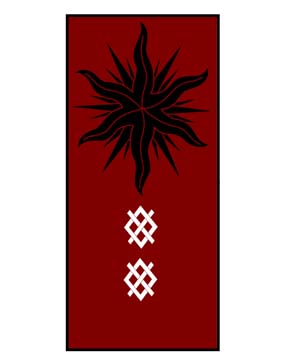 Horde Masters of War - The Horde Masters of War are the Horde Generals that control the when, where, and how the Horde will attack. The Master's of War are not part of the council. They do not report to the council. The only entity the Master's of War report to, is the High Chieftain of the Horde. Horde Masters of War - The Horde Masters of War are the Horde Generals that control the when, where, and how the Horde will attack. The Master's of War are not part of the council. They do not report to the council. The only entity the Master's of War report to, is the High Chieftain of the Horde.Return to Top |
||||||||||||||||||||||||||||||||||||||||||
| Horde Thunder - Horde Thunder is the name of the Field Cross Team of the city of Two Worlds. Return to Top |
||||||||||||||||||||||||||||||||||||||||||
 Horde Union - Horde Union is the official name of the goblinoid Horde of Alquennas. Since the dawn of the Goblinoid races, the Horde Union has existed. Even the Ogres are part of the Horde Union and are the only members that do not have absolute loyalty to the Horde itself. Horde Union - Horde Union is the official name of the goblinoid Horde of Alquennas. Since the dawn of the Goblinoid races, the Horde Union has existed. Even the Ogres are part of the Horde Union and are the only members that do not have absolute loyalty to the Horde itself.Return to Top |
||||||||||||||||||||||||||||||||||||||||||
| The Horn Constellation - The Horn Constellation is one of the constellations of the South Polar Region of Alquennas. It is comprised of 10 stars. Return to Top |
||||||||||||||||||||||||||||||||||||||||||
| Horseball - Horseball is an equestrian competition event that a rider and horse must work together to score a ball through a small next about 1 ½ yards by 1 1/12 yards. There are two teams of four (horses and riders) on the field at one time. Return to Top |
||||||||||||||||||||||||||||||||||||||||||
| Horseradish - Horseradish root has been known since ancient times. The strong pungent flavor of the Horseradish root has been used as a condiment for food as well as an aphrodisiac in antiquity. Its equally powerful flavor keeps many natural predators from eating the Horseradish root.
The Horseradish plant grows incredibly fast. A single root, if unmolested, can take over an entire acre within a season. It will even force out other plants to accomplish this. Magically, Horseradish is rated MR 3; magically elements Earth and Fire. Horseradish is useful in Warding spells where a single quantity acts as three quantities of materials and increases the wards effect by 13% for the duration of the spell. Horseradish root is also useful in command magick (especially love spells) where a single quantity acts as two quantities and increases the spell effectiveness by 3%. Raw horseradish roots costs ¼P per pound. Prepared horseradish root costs ¾P per pound. One can find horseradish 90% available in the store and 45% in the wild. Return to Top |
||||||||||||||||||||||||||||||||||||||||||
| Hortus Conclusus - A Hortus Conclusus is an enclosed garden that is usually enclosed by walls or a fence. Return to Top |
||||||||||||||||||||||||||||||||||||||||||
| Hot Frames - A hot frame is similar to a cold frame with one distinct difference. A hot frame uses manure to increase the temperature inside the frame to keep plants alive and growing during the cold of winter. Return to Top |
||||||||||||||||||||||||||||||||||||||||||
| Hourglass Plant - The Hourglass plant gets its name from the blue hourglass shapes that appear on its yellow flowering petals. The Hourglass plant can be found in the temperate regions of the northern and southern hemisphere in meadows and near sources of water. The Hourglass plant is also known as the purifying plant as it absorbs natural poisons, toxins, and pollutants from water. In order to purify a gallon of water, one must place 7 quantities of leaves with the hourglass into the water and wait a full day. The user then inspects the leaves and if they have turned brown then they have absorbed the poisons in the water. If the leaves do not turn brown, then natural poisons did not contaminate the water.
One will have a 25% chance of finding an Hourglass plant in the wild in the appropriate topography. One will have an 80% chance of finding Hourglass plant components in a shop in the appropriate topography at a cost of 25 P per quantity. While an Hourglass plant removes toxins from water supplies, they are extremely toxic to eat. The only known race that is capable of ingesting them is Sea Drakes. It is thought that the Hourglass plant may form a component of their Venom. Return to Top |
||||||||||||||||||||||||||||||||||||||||||
 Hull - Hull is a city in the county of Myra in the province of Kent in the country of Azin. Hull - Hull is a city in the county of Myra in the province of Kent in the country of Azin.Return to Top |
||||||||||||||||||||||||||||||||||||||||||
| Hunting Music - Hunting Music refers to the horn blasts and patterns of horns blasts from a hunting horn used to direct the hunt, provide information, etc. Return to Top |
||||||||||||||||||||||||||||||||||||||||||
| Huntress or Huntresses - The Huntress or the Huntresses are an order of female archer knights of Kenda. They came into general awareness during the Fourth War with the Horde. Their specialized curved longbows are one of their signatures. It takes six to ten years of training for a girl to become a member of the Huntresses Order. Return to Top |
||||||||||||||||||||||||||||||||||||||||||
 Hyach - Hyach is the name given to the Larger of the two moons of Alquennas. Hyach is the God of The Protector or Protector God, Warrior and provider. Hyach's Symbol or aspects are the large moon of Alquennas, a Staff, and a Blue Rose. He is the husband of Debohran. Hyach - Hyach is the name given to the Larger of the two moons of Alquennas. Hyach is the God of The Protector or Protector God, Warrior and provider. Hyach's Symbol or aspects are the large moon of Alquennas, a Staff, and a Blue Rose. He is the husband of Debohran.Return to Top |
||||||||||||||||||||||||||||||||||||||||||
 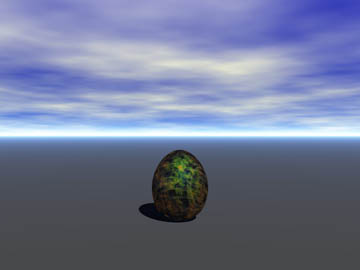 Hydras - Hydras are a race of lesser dragons. They are not part of the intelligent races of dragons. They are dangerous and they have caused numerous issues throughout history. The Horde and other races have used them as a weapon. Return to Top |
||||||||||||||||||||||||||||||||||||||||||
